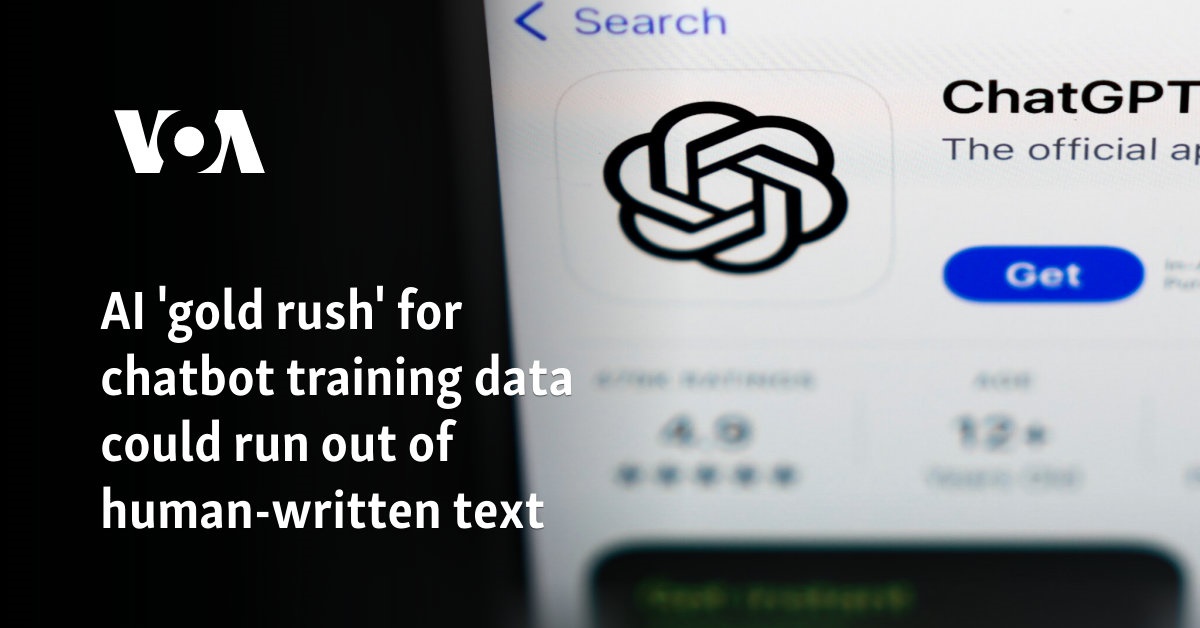As artificial intelligence continues to evolve at a rapid pace, the demand for high-quality training data for chatbots and other AI models has surged. This phenomenon, often referred to as the AI ‘gold rush,’ has raised concerns that the supply of human-written text might soon be depleted.
The Surge in Demand for Training Data
The development and refinement of AI models, particularly those used in natural language processing (NLP) and conversational AI, rely heavily on vast amounts of text data. This data is essential for training models to understand and generate human-like text. The success of AI systems such as OpenAI’s GPT-4 and similar models from other tech giants hinges on the quality and quantity of this training data.
- Growth of AI Applications: From customer service chatbots to virtual assistants and advanced content generation tools, the applications of AI are expanding, driving an unprecedented need for diverse and extensive text corpora.
- Quality of Data: High-quality, human-written text is crucial for training AI to produce coherent, contextually appropriate responses and maintain conversational relevance.
Potential Depletion of Human-Written Text
The relentless demand for training data has sparked fears that the available supply of human-written text could be exhausted, leading to several critical issues.
- Finite Resources: The corpus of human-written text is vast but not infinite. As AI developers scrape the internet, digitize books, and utilize publicly available data, the reserves of fresh, high-quality text may dwindle.
- Diminishing Returns: With the most accessible and relevant texts already used extensively, the incremental value of newly available data might decrease, potentially compromising the performance and reliability of future AI models.
Implications for the AI Industry
The prospect of running out of human-written text for training has several implications for the AI industry and its stakeholders.
- Innovation in Data Collection: AI developers may need to innovate new methods for data collection, including the creation of synthetic data, crowd-sourced writing projects, or partnerships with content creators.
- Regulatory and Ethical Considerations: The race to acquire training data raises ethical questions about data privacy and intellectual property, as well as the need for regulatory frameworks to govern data use.
- Impact on AI Development: A shortage of high-quality training data could slow the progress of AI development, leading to less accurate and effective AI applications.
Exploring Solutions
To address the potential shortage of human-written text, several strategies could be employed:
- Synthetic Data Generation: AI itself can be used to generate synthetic training data. While this approach presents challenges, it also offers a scalable solution to augment the existing text corpus.
- Incentivizing Human Contribution: Creating platforms that incentivize users to produce content specifically for AI training could help sustain a steady flow of fresh data.
- Enhanced Data Utilization: Improving the efficiency of data usage through advanced preprocessing and augmentation techniques can maximize the value derived from existing datasets.
Conclusion
The AI ‘gold rush’ for chatbot training data underscores the crucial role of human-written text in the development of advanced AI systems. As the demand for training data continues to grow, the industry must innovate and adapt to ensure a sustainable supply of high-quality text. By exploring synthetic data generation, incentivizing human contributions, and optimizing data utilization, the AI community can navigate the challenges of this data-driven era and continue to push the boundaries of artificial intelligence.





